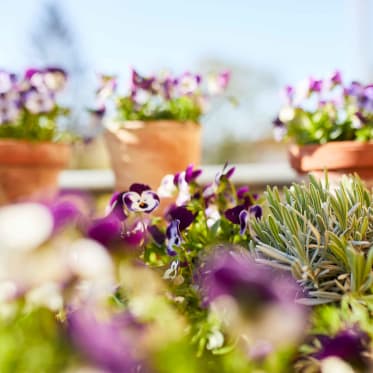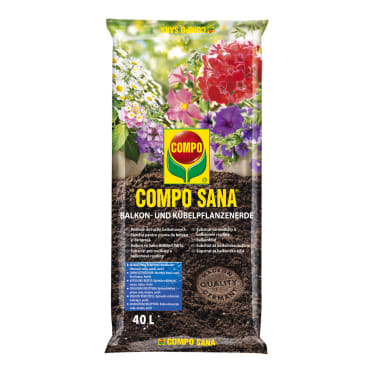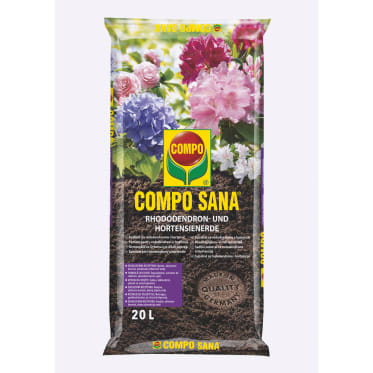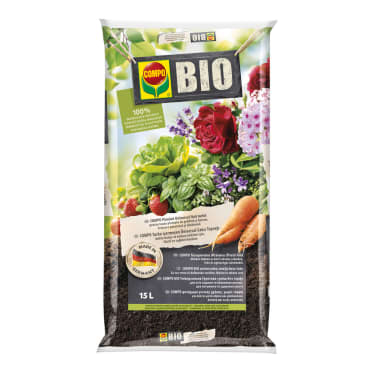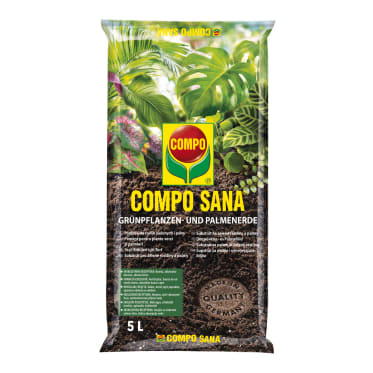Frequent search terms
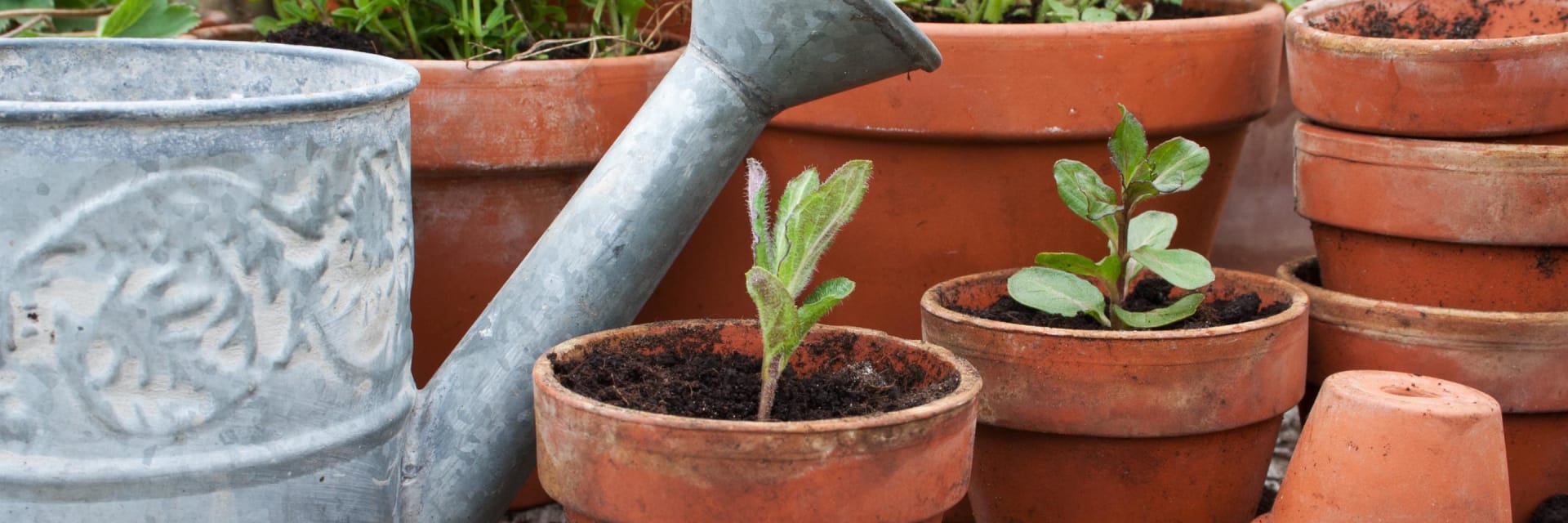
- COMPO
- Guide
- Plant Care
- Basics
- Planting properly
- Repotting plants properly: a simple step that makes a huge difference
How does it work?
Repotting plants: a simple step that makes a huge difference
Your plants can only develop optimally in perfect conditions. Besides enough light, water and nutrients, your protégé needs one thing above all else for healthy growth: enough space. Sadly, this basic requirement is often ignored. We have summarised why it is so important to repot plants and how to do it step by step for you here.
Why should you repot your plants?
- If the pot is fully rooted or too small, the root system can't develop further, meaning that your plants can't grow optimally.
- Repotting improves stability and prevents one-sided growth.
- Recently purchased plants in particular are often in pots that are too small and the limited root space prevents ideal plant development.
When and where should you repot your plants?
Repotting your plants in a larger container every one to three years depending on growth is a good idea. Generally speaking, plants can be repotted throughout the year but the start of the growth period in the months of February through to April is a particularly good time. You should find a new planter for your plants by the time that the soil is completely rooted at the latest. The container should be 2-3 cm larger than the previous one. The diameter should be about 5-6 cm larger than the old pot for older plants that are not repotted every year. Check your plant for pests such as aphids and spider mites before repotting them.
Step by step guide
How should you repot your plants?
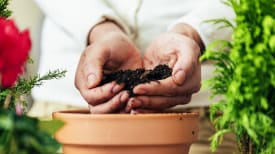
1
Prepare the new pot
Cover the bottom of the new container with gravel, clay fragments, hydro-granules or something similar to prevent the soil from seeping out. This foundation also improves aeration – preventing waterlogging and subsequent rotting roots.
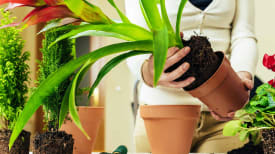
2
Remove the old pot
Remove the plant from the old pot. If the root ball has thoroughly rooted, break it up a little. Shorten thick excess roots to stimulate new growth in the plant. Dried or rotten roots need to be completely removed.
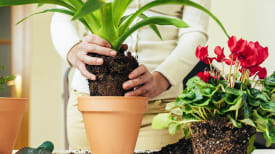
3
Place the plant in the new pot
Fill the new pot with some soil – either universal soil or a special substrate tailored to the plant's needs. Then place the plant in the pot and position it so that it is upright. Fill the container with more soil up to 2 cm below the rim.
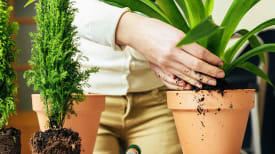
4
Water the plant
After you have pressed the new soil down well, add some more substrate. It is important that you leave a space of 1-2 cm between the soil and the rim of the pot. This gap to allow for watering makes it easier for you to water and prevents irrigation water from spilling over. Place the plant on a waterproof drip tray or in a waterproof planter. Then water the plant well with a lukewarm and fine stream of water. Water your plant from underneath with a drip tray or using planters.
Tip for soil that is too moist
If the soil has become too moist, add a little sand to the surface and rake the material once more. This way, the water will evaporate faster.
More repotting tips
- Gently loosen the potting soil before use – this prevents clumping and compacting.
- Make sure you choose the right sized container! If the planter is too big, plants become occupied with root formation and don't put their energy into forming leaves or flowers.
- Use glazed drip trays or planters so that no moisture can pass through.
You might also be interested in these topics
Find the right soil for repotting your plants here





